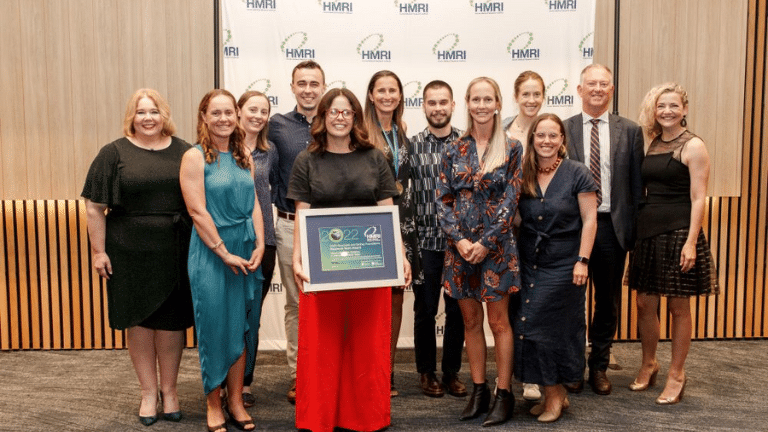
HMRI researcher, Dr Nicole Nathan, leads a team of nine educators, Research Assistants and post-doctoral academics that are revolutionising physical activity in schools.

The project, dubbed PACE (Physically Active Children in Education), is the second iteration of a research study that aimed to boost activity levels to the Government-recommended 150 minutes per week, per person.
Nicole says, “The best practice guidelines, which the NSW Department Education adopted, was for schools to implement at least 150 minutes of physical activity per week. But we knew that was really challenging for schools.
The curriculum is already so crowded and some teachers told us that they lacked the confidence to teach Physical Education (PE) on top of everything else. “In our first project, we tried team teaching – going into schools to support teachers with PE classes – but what we were finding is that it [PE] was quite often cancelled or changed as the day got busy in a school,” said Nicole.
The PACE program was designed to find a way that teachers could easily incorporate PE and sport, or make their lessons more active, without adding extra burden to an already heavy teaching load. The team came up with PACE which really focused on ‘energisers’; 2 – 3-minute activity breaks that teachers could use throughout the day.
Nicole says, “These really struck a chord. Teachers could run them themselves using simple resources or via Go Noodle, an online resource platform, and were even able to incorporate them into their lesson plans during COVID-19 restrictions.”
The PACE program is currently in 200 schools in the Hunter New England region and has expanded into six local health districts but Nicole says that this is just the beginning.
“COVID-19 forced us to convert everything into online modules and we also got NSW Education Standards Authority Accreditation (NESA) for PACE so it counts towards teachers’ professional development. It’s one of only two courses to have done this in the physical and mental health space.
“Because PACE is cost-effective and scalable, the goal is now to make it a national program.
“PACE came from a service delivery need. It wasn’t designed to be academic or about publishing papers. It was designed to support schools implement daily physical activity that will improve the health, wellbeing and academic achievement of all children. We now need help from health and education policy makers to ensure that every school can access the program,” said Nicole.
When it comes to Government funding, what Nicole wants is the support to roll out the program out across NSW and more broadly, if possible. There is no cost to schools to be part of PACE. Nicole says that the major challenge is ensuring schools continue to schedule physical activity in years to come.
“This is where additional funds could help. We are leading research to identify how we best sustain programs in schools after the initial implementation.”
For Nicole and her team, there’s plenty more to do to get kids moving.
“We’re looking at how to better access and support rural, remote and/or Aboriginal and Torres Strait Islander priority populations and schools within lower SES (Socioeconomic Status) areas. We’re also looking at ways we can boost physical activity for girls,” says Nicole. “Around the age of eight or nine, we’re seeing a massive drop in girls’ physical activity. Only two per cent of girls are meeting physical activity requirements. A lack of exercise is the fourth leading cause of non-communicable disease. As a woman with daughters, this is not OK.”
The PACE team is currently exploring ways they can get girls into activity for life.
“It doesn’t have to cost money or need flash equipment. We want girls to have exposure to a range of different activities so they can find something that suits them.
“We’re also really interested in understanding the ways that girls’ school uniforms impact their activity levels.
Feedback we’ve had is that exercise is ‘not cool, not feminine or makes you stinky’. We need to put a framework around socio-ecological determinants, as well as socio-cultural ideas, to work out how to adapt physical activity in schools to better suit girls.”
Find out more about PACE here
HMRI would like to acknowledge the Traditional Custodians of the land on which we work and live, the Awabakal and Worimi peoples, and pay our respects to Elders past and present. We recognise and respect their cultural heritage and beliefs and their continued connection to their land.

Hunter Medical Research Institute
We’re taking healthy further.
Locked Bag 1000
New Lambton
NSW, Australia, 2305



This site is protected by reCAPTCHA and the Google Privacy Policy and Terms of Service apply.
Copyright © 2024 Hunter Medical Research Institute | ABN: 27 081 436 919
Site by Marlin Communications
